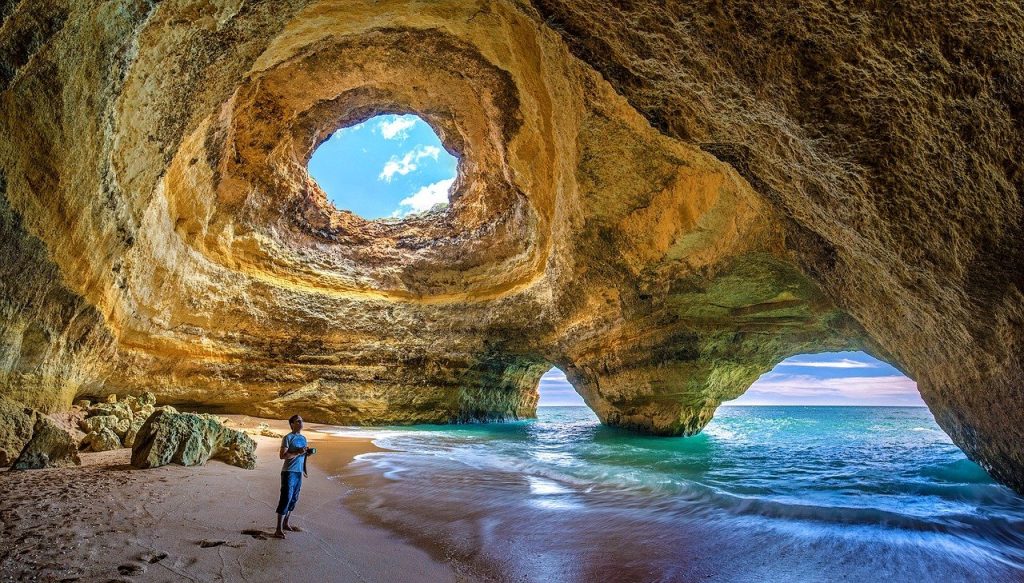Explore UNESCO World Heritage monuments in Portugal, delving into the nation’s rich history and cultural heritage. Indulge in delectable conventual pastries, a tantalizing taste of tradition. Discover the secrets of Porto Wine, renowned worldwide for its distinctive flavor. Immerse yourself in the birthplace of Portugal, Guimarães, known as “the cradle of Portugal,” where history comes alive amidst charming streets and historic landmarks. Each experience offers a glimpse into Portugal’s storied past and enduring legacy.
|
Arrival - Lisbon
Discovering Lisbon
Sintra , Cascais & Estoril
Algarve
Évora & Esporão
Óbidos & Coimbra
Douro Valley & Peso da Régua
Porto
Guimarães & Braga
Today you will be driving from Oporto to Guimarães & Braga.
Get around Portugal’s Most Historical City Guimarães. This city is for visitors, especially if they are interested in the country’s history. Located in the Minho region in north Portugal, Guimarães is hailed as the ‘cradle of Portugal’ for two obvious reasons. First, it is the birthplace of the country’s first king, Afonso Henriques. Second, it was the first capital of the newly established Portugal kingdom. Furthermore, the city is considered as one of the most important historical cities in the country. To prove this, its historical centre has been recognized as a UNESCO World Heritage Site. One historical structure in Guimarães, Portugal that visitors should not miss paying a visit to is the Castelo de Guimaraes. While it was built in the 10th century to protect the people from the attacks of Moors and Normans, it is also believed to be where the first king of Portugal, Afonso Henriques, was born. Moreover, the Igreja de Sao Miguel de Castelo stands next to the castle, the church where the king was believed to be baptized. Besides its historical importance, the church is a view in itself because of its Romanesque structure. Also standing across the church is the Palace of the Dukes of Bragança or the Paço dos Duques. Built in the 15th century, it is a medieval palace that houses a huge collection of furniture, carpets, porcelain, and portraits that date from the 17th and 18th centuries.
Before exploring the ancient city of Braga we will make a break for lunch. Braga has always been an important centre for culture, commerce and religion with beautiful cathedrals and churches, the main attraction of the city. Many of them were built yet in the beginning of the Middle Ages. The local citizens cherish the legacy of the past. Nowadays simply every church or cathedral of the city is home to unique religious artefacts. The historic part of the city is the most interesting one from excursion point of view. There is a beautiful park – Gardens of Saint Barbara – in the centre of it. A large park with shady valleys and old trees will become a perfect destination for people who want to escape from the bustle of the city and enjoy the splendour of nature in its full. Return to your hotel.
Porto - Departure

Please note that this is not a live online booking engine. By submitting your booking inquiry, does not confirm the booking yet. Our reservation will get back to you with a confirmation and prices. Once you have received our proposal, you have the opportunity to review it before finalising the booking with us.
INSIDER JOURNEYS AUSTRALIA
320 Pitt Street
Sydney New South Wales 2000
+61 1300 138 755
info@insiderjourneys.com.au
INSIDER JOURNEYS UK
12 Melcombe Place
Marylebone, London, NW1 6JJ
+44 186 526 8940
info@insiderjourneys.co.uk
INSIDER JOURNEYS USA
125 Kingstone Dr. Ste. 107
Chapel Hill, NC 27514
info@insiderjourneys.us
INSIDER JOURNEYS CANADA
#650 – 997 Seymour Street
Vancouver, BC V6B 3M1
+1 855 663 3736
info@insiderjourneys.ca
INSIDER JOURNEYS EUROPE
Parkstrasse 39
82065 Baierbrunn
info@insiderjourneys.de
INSIDER JOURNEYS IRELAND
Church Lane
Midleton, Cork
info@insiderjourneys.ie
INSIDER JOURNEYS SOUTH AFRICA
812 Park Street
Arcadia, Gauteng, Pretoria
info@insiderjourneys.co.za
One of our Journey Designer will contact you shortly to confirm the details.
